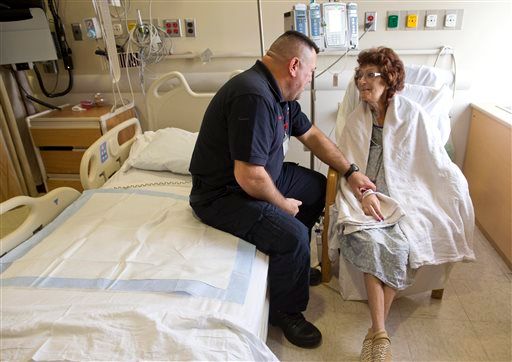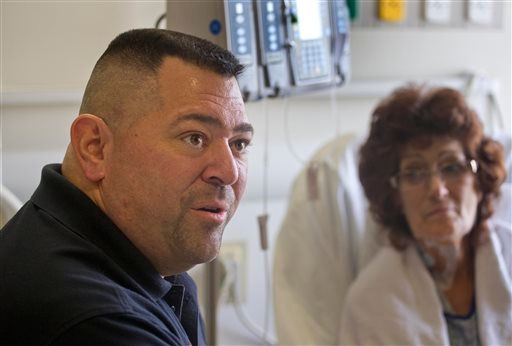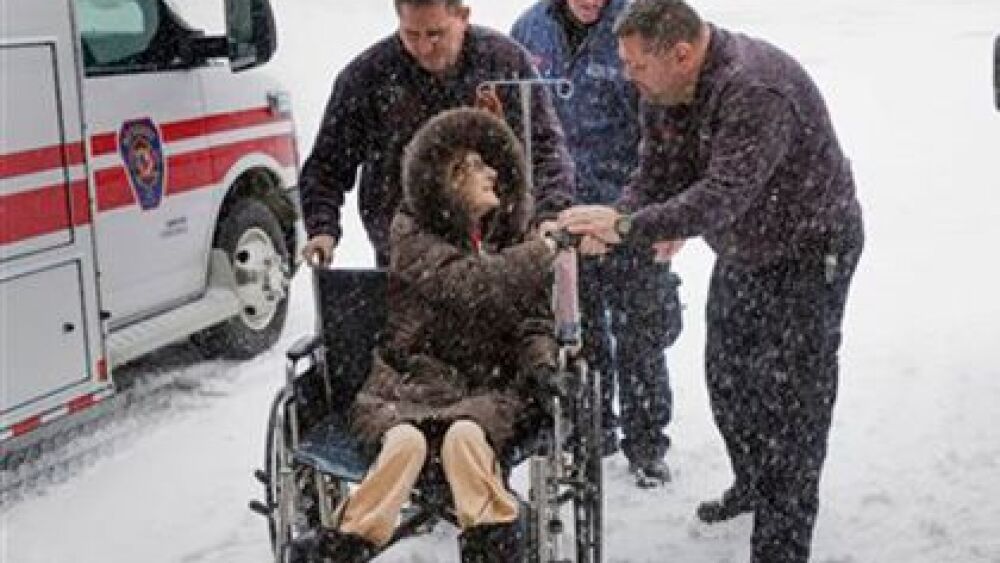By Peter Amato
In the winter of 1989, I wanted to help out my community in some way. I had some high school friends that volunteered at the local ambulance company and thought it would be a great way to help out my friends and neighbors.
This was a short-lived period in my life. Because at 21 years old, life just gets in the way. Jobs were changing, girlfriends were changing, friends were changing and my life was changing.
One year later, I found the love of my life, married in the Spring of 1992, moved into an apartment a few towns over and 25 years later we are still one, plus three kids and a dog.
I mention this because ever since departing from the ambulance company, I had a feeling something was missing.
Longing to get back in EMS
Shortly after settling in on the “marriage thing” and before kids, my wife and I had a heart-to-heart talk one night and I realized I couldn’t do my job for the rest of my life.
I worked sales and was not happy. It was not my passion. Later that night, while watching television, my favorite show came on — “Rescue 911.” That episode highlighted the heroism of the Maryland State Trooper Aviation Division and I recall saying, “Now that’s cool. I could see doing that for the rest of my life.”
My bride turned to me and said, “Go for it,” and I have had her full support for a quarter of a century and have never looked back.
It’s been a long road to finally get to where I am today, but it has been a journey well-traveled.
Several volunteer agencies and fire departments later, I have finally landed my dream job, working as a flight paramedic for the county’s only Level I Trauma Center.
I give you this backstory so you have an understanding to the events leading up to Jan. 23, 2016.
White blanket of snow
On that day, the country’s northeast was being hammered by a blizzard and therefore shutting down the aviation bases. The night before, I received a phone call from one of my supervisors explaining such and that I was being relocated to work out of the hospital on an ambulance in the morning.
As I woke up and got ready, strapping on my boots, donning my jacket and gloves, I kissed my wife and kids “good day.” I dislike goodbye, it feels like it is forever. I made the 15-mile trip to work through less than optimal road conditions and the peak of the storm was just beginning.
A few hours into my shift, the snow was coming down in what appeared to be a white blanket shifting side to side from the howling wind. Suddenly, there was a call from transplant services asking for an odd request.
There is a standing joke in our office — if someone in the hospital can’t figure something out, then they call EMS.
We are a small office down the hall from the ER that is very resourceful and we will make things happen. The request was a kidney was on its way to us, but the recipient was not. The patient was snowed in.
Knowing there is a small window of opportunity in which to coordinate the successful outcome, we all sprang into overdrive. One person called the transplant floor, one person called the patient, two people went outside to clear off an ambulance and I ran down the hall to discuss the situation with my supervisor.
It was quickly determined that the hospital owned a 4x4 First Responder, a Ford Expedition, that would be the best vehicle to make the attempt to get the recipient to the hospital.
I stepped up asking to be the one to make such attempt. I had no doubt in my mind that I couldn’t pull this off. That was until I started the 20-plus mile trip to the home of a woman that was trapped by piles of the fluffy white stuff.

Paramedic Pete Amato talks with patient Melanie Chirichella in her room at Stony Brook
University Hospital. (AP Photo/Julie Jacobson)
Failure is not an option
Shortly after leaving the base at the hospital, I was confronted by a tractor-trailer jackknifing in front of me — nearly forcing me off the road into a ditch.
Maybe it was goodbye this morning to my family.
After making it through that, I thought: what were the road conditions ahead of me like? How long would this take and would we be there in time? What conditions faced me when I arrived at the home? Would my vehicle get stuck and how bad would the conditions be for our return?
Then I remembered a saying a friend always says, “Failure is not an option.”
This entire course of events struck a personal chord for me. In April 1998, my own brother received a similar phone call from transplant services at Cornell Hospital in New York City. He was on the list for a kidney and pancreas transplant, and, though I didn’t need to track through snow on that day, I did need to drive him almost 100 miles in bumper-to-bumper traffic so he could receive his gift.
Once arriving at the home of my intended patient, I was confronted with yet another obstacle. There was two feet of snow in an unshoveled driveway.
Leaving the Responder vehicle running in the street, I made my way to the front door and rang the bell. I was greeted by a frail older woman asking, “Are you from Stony Brook?” I replied, “Yes I am and are you ready for the next chapter of your life to begin?”
We both teared up and then asked how I was going to get her out of the house that she can’t even open the front door because of the snow. I explained I will get the door open and I could either carry her to the Responder or if she had a shovel I could shovel the driveway, get my truck as close to the door as possible and go from there. After finding a shovel in her garage, the latter was the option of choice.

Paramedic Pete Amato, left, answers questions during an interview while visiting with
Stony Brook University Hospital patient Melanie Chirichella. (AP Photo/Julie Jacobson)
A family affair
My patient was now buckled in and off we went. Our return trip was nearly cut short similarly to how it started. A vehicle slid out causing a Jeep to spin out of control — almost hitting us.
My frail companion asked, “Is this safe?”
I told her, “No, but I’m getting you to your long-awaited prize.”
Continuing to maneuver around stuck cars, snowdrifts and other obstacles, I started a conversation to get to know her battle with kidney disease and other complications. I told her about my family’s personal journey with transplant and that she will see first-hand the results of one.
Puzzled to what I was saying, I explained my brother’s situation and that he also works for the hospital as an EMT. He was there awaiting our arrival, because he was my partner that day and also helped coordinate these events.
As I pulled into the ER bay, I told her she will be assisted into a wheelchair and brought up to the transplant floor by my brother.
It took her a few seconds to absorb what was happening and then fighting back more tears said, “This is really happening,” she asked?
I explained, “Yes it is.”
After parking the Responder back in its original spot, I made my way back to the EMS office to be asked proudly by my supervisor, “How’d it go?”
I joked, “Boss, I’m a paramedic. How do you think it went? The patient is upstairs being prepped for surgery.”
We all chuckled and went about our day ready for the next challenge.












